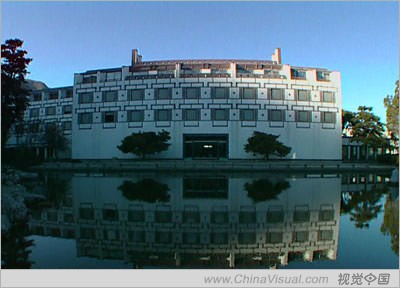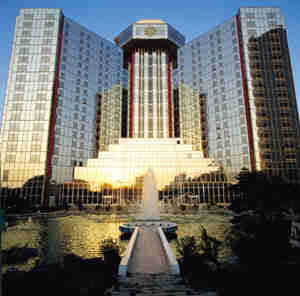|

|
|
File photo of the Fragrant Hill Hotel in 1983.
|
Fragrant Hill Hotel, National Grand Theater, the new CCTV office building, Bird's Nest… Beijing's architecture, like a mirror, reflects China's progress over the past 30 years. With the economy strengthening, the Chinese people have also been expanding their minds and their ideas.
"In the 1970s, shabby architecture spread across Beijing, and the empty streets turned dark when night fell… (Nowadays), the city is crowded with newly-built skyscrapers, wide roads and overpasses… They not only rely on their own Chinese architects, but also invite excellent talent from all over the world to design their landmark buildings." Thus Singapore Minister Mentor Lee Kuan Yew describes changes in the architecture of Beijing over the past 30 years in an article following the Beijing Olympic Games.
The Fragrant Hill Hotel, designed by Ieoh Ming Pei, a Pritzker Prize-winning Chinese-born American architect, was the first piece of work by overseas architects after China adopted the reform and opening-up policy.
Ieoh Ming Pei designed this hotel in the Fragrant Hills Park, located on the west side of Beijing, in 1979. This talented modern architect provoked an enormous shock in the Chinese construction industry.
Since then, Beijing's architectural design market has been open to the outer world.
 |
|
The Great Wall Sheraton Hotel Beijing was designed by the American Beckett International Corporation and finished in 1983.
|
The Great Wall Sheraton Hotel Beijing, designed by the American Beckett International Corporation and finished in 1983, is another work by foreign architects. This giant building startled the whole nation with its application of glass curtain wall to the main building, representing a breakthrough on China's mainland.
"This building aroused great controversy. Some thought it didn't accord with the style of Beijing. It was too modern," said Xuan Xiangliu, former deputy director of the Capital Urban Planning and Construction Commission. "But we went ahead with it. Since we knew little about foreign construction technology, we tried to address the problem by introducing advanced techniques from abroad."